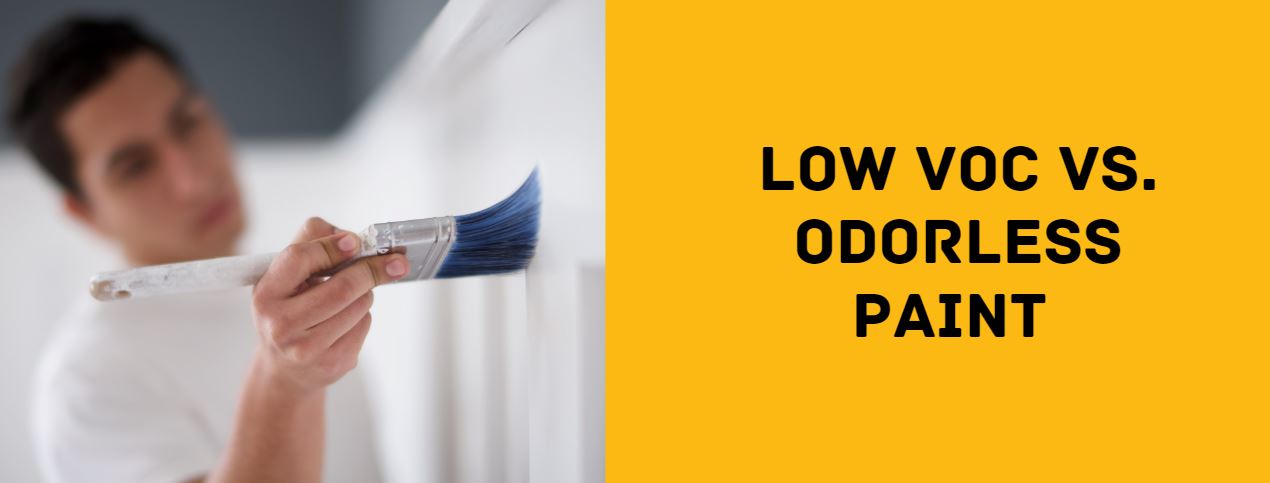
Low VOC vs. Odorless Paint: How each can affect your property
Posted on November 17, 2020
 Deciding what type of paint to use on your property is a big decision, although not everyone understands the subtle nuances between different paint options. Common details that aren’t always taken into consideration may be how the paint’s substance smells, the strength of its fumes, and whether it’s safe for your specific needs. That’s why it’s so important to understand the difference between low volatile organic compound (VOC) paint and odorless paint, regarding how each can affect your property.
Deciding what type of paint to use on your property is a big decision, although not everyone understands the subtle nuances between different paint options. Common details that aren’t always taken into consideration may be how the paint’s substance smells, the strength of its fumes, and whether it’s safe for your specific needs. That’s why it’s so important to understand the difference between low volatile organic compound (VOC) paint and odorless paint, regarding how each can affect your property.
What are VOCs?
VOCs refer to paints that have volatile organic compounds, which are the airborne chemicals that produce odor while paint is wet or curing. When applying these types of paints, their odors can continue to release slowly over several years. As noted in research, this can lead to various symptoms, like skin or allergy irritation, headaches, fatigue, lightheadedness, nausea, pulmonary issues, and many others depending on the individual and their sensitivities.
Solutions to traditional VOCs
Despite all the concerns traditional VOC paints raise, there are alternatives you can plan to use and use on your next commercial project. Two of these solutions are:
- Low VOC paints. While these paints may still give off a minor odor, they are far less invasive than normal VOC paints and typically offer more color options for your property than odorless paints.
- No VOC aka odorless paints. When using these types of paints, you can expect zero odor, although they may still contain some traces of VOCs. Additionally, these paints may offer fewer color options for your property, but using them can be a more environmentally friendly choice.
3 important things to know about Low VOC and Odorless Paints
Whether you decide to use a low VOC or odorless paint for your next commercial painting project, here are five important things you should know.
- Make sure not to clean the surface where your odorless paint has been applied for the first 30 days.
- Odorless paints use fewer chemicals, one of them being fungicides, which means odorless paint surfaces can be more likely to get contaminated by micro-bacterial substances.
- Odorless paints can require additional coats of paint, compared to low VOC or VOC paints, to get the same desired outcome.
Want to know more about these different paints and which might be best for your commercial property
If you want to know more about these different paints and which might be best for your commercial property, our team is always happy to help. All you need to do is connect with a member of our team via email at [email protected] or over the phone at (317) 252 – 0334.
You can also fill out our online commercial painting quote request form if you already have a project in mind!





